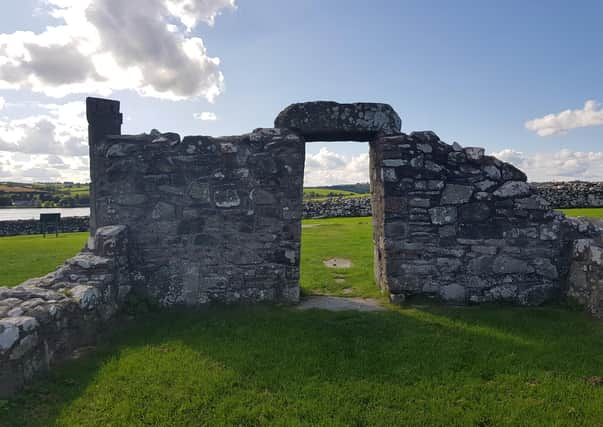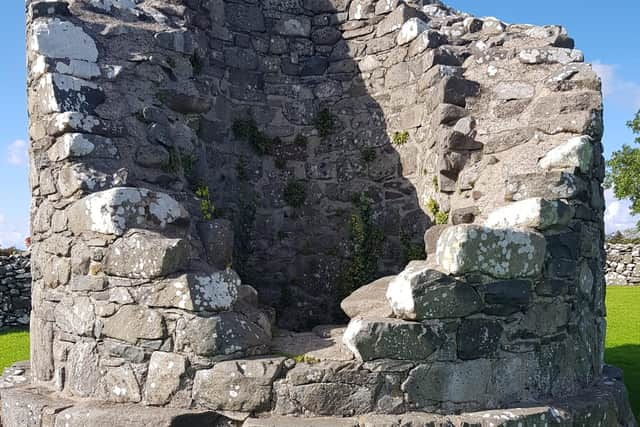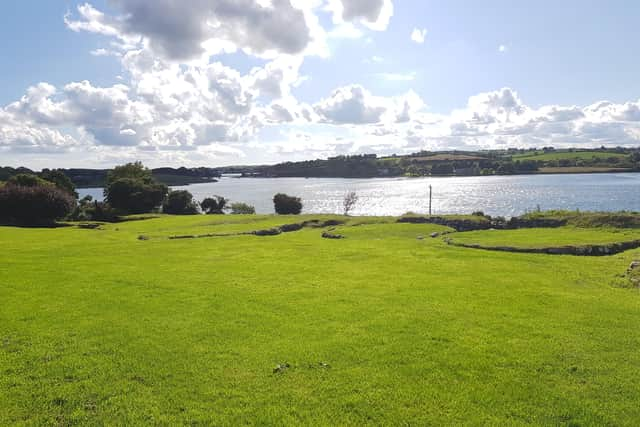STEPPING BACK IN TIME: Saints, scholars and mermaid of Mahee Island


Sadly, because of the Covid-19 pandemic we have been staying as close to home as possible and I am not getting to explore old sites as much as I would like to get to do, but my thoughts have been returning to Mahee Island, as it would be around about this time of the year that I would find myself watching waders, especially the Brent Geese in their winter feeding spots.
But amid the breathtaking natural history that surrounds the island it is also steeped in a remarkable history, too. I have recently been reading some of the notes on the island which were compiled by the antiquarian Francis Joseph Biggar (1863-1926).
Advertisement
Hide AdAdvertisement
Hide AdThe monastic site, which was excavated by H C Lawlor between 1922 and 1924, his finds are now held by the Ulster Museum in Belfast.


Writing in the News Letter in October 1922 Biggar related how Nendrum is reputed to have been founded in the fifth century Mochaoi, after whom Mahee Island is named, although a later date for the foundation has been suggested. Mo Chaoi, like the name of many Irish saints, is a pet name. His proper name was Caolán and according to tradition he was appointed by St Patrick.
Indeed Biggar notes that after Mochaoi founded his settlement in Mahee Island that it “soon became a place of celebrity and learning, one of the famous schools which brought to Ireland the well-earned title ‘Island of Saints and Scholars’”.
Among its pupils of fame were Colman, the founder of Dromore, and Finian, the founder of Movilla at Newtownards.
Advertisement
Hide AdAdvertisement
Hide AdBiggar writes: “A story is told of Colman when a youthful student of Saint Mochai, that one day he asked the abbot for other work to do, and Mochai told him to remove a great rock over which the brothers sometimes stumbled in the darkness of winter mornings when going to their prayers, and this Colman did, casting it into the lough, where it was called Carrig-Colman, or Colman’s Rock.”


But what brought Mahee and Nendrum back into my mind most recently was a Facebook post by a friend about a pub in Kircubbin, across Strangford Lough from Mahee, which was called the Mahee Mermaid Hotel. It got me thinking of where that name came from. And after a little searching online I was lucky enough to find a poem written by John Vinycomb, MRIA. He also penned the poem The Monks of Mahee. But I think The Mermaid of Mahee is a much more interesting read:
The Mermaid of Mahee
A Legend of Strangford Lough
When fairies lived in this old land,
And kelpies held the streams,
Such nights were seen and music heard
As come to me in dreams.
To the lone peasant’s fond belief,
In legend wild and gory,
Of sprite benign and goblin dam’d,
Is due to this wondrous story:
How the rude savage glories most
In terrors weird and fearful,
While timid souls take up the tale
With sadd’ning hearts and tearful.
They saw in fairy-haunted earth
The elfins sport and play;
They heard unearthly music float
Between the night and the day,
And feared, if seen, to be bewitched,
Or carried under ground,
To dance by night in fairyland
To magic music’s sound.
They feared the moonlight’s baleful sheen
By lonely moor or river;
They feared the dreaded weird banshee
That wails for mortals over.
But more they feared the Sweet Merroe
That haunts the lonely shore,
For he who hears th’ enchanting strain
Is lost for evermore.
And who is there that has not heard
Of sirens of the sea,
The mirrow dread of Strangford Lough,
The Mermaid of Mahee?
The sea-maid there would oftimes haunt,
At evening’s silent close,
With tuneful harp and songs so sweet,
When from the waves she rose.
Her golden locks in freedom float
Around her lovely form;
Her beauteous face, with eyes so blue,
Deride the coming storm.
She thrills the air with melodie,
So sweet, so clear, so high,
That the lone fisher turns to hear,
And listen with a sigh.
For well he know he may not stay,
His earthly lot is over;
Follow he must beneath the waves
The Mermaid, as her lover.
And tales are told how many a one,
Lost in Loch Cuan’s tide,
Had heard the Mermaid’s charmed strain,
And fied with her to bide,
In coral caves beneath the waves,
Or sport by pearly strand;
Transformed by fairy sea-maid’s power
To Merman jovial band.
And once, ‘tis said, a holy monk,
On Mahee sacred soil,
Was lost to sight for many a day,
No more a priest to toil.
For he, beguiled by character’s strains,
Swiftly dived in after,
Nor had he thought of brethren,
Or Abbot’s hearty laughter.
For, married to a Mer-Mayden
At bottom of the sea,
He lived and frolic’d with the best,
Forgot was Isle Mahee.
Till once again her heard the chime
Of Matins sweetly sound,
And blessed himself – before he knew,
Transported was to ground.
Beside his round tower’s lofty pile
He knelt him down to pray,
And bade the brethren – this believe –
To swear by Saint Mochae.
And now in after years come back,
With mind distressed and hazy,
Told how he’d lived beneath the sea,
The brethren cried, “He’s crazy.”
The Abbot frowned with look severe,
Thought sadly of the man –
And maiden’s eye – then slowly said,
“We’ll put him under ban.”
Said he, “You’ll live and dream your dreams
Within your prison cell,
High in the round tower’s topmost round,
And ring the service bell.”
My thanks to Professor Eileen Murphy of the School of Natural and Built Environment at Queen’s University, Belfast, for the permission to use these photographs of the Nendrum monastic site on Mahee Island.
Comment Guidelines
National World encourages reader discussion on our stories. User feedback, insights and back-and-forth exchanges add a rich layer of context to reporting. Please review our Community Guidelines before commenting.